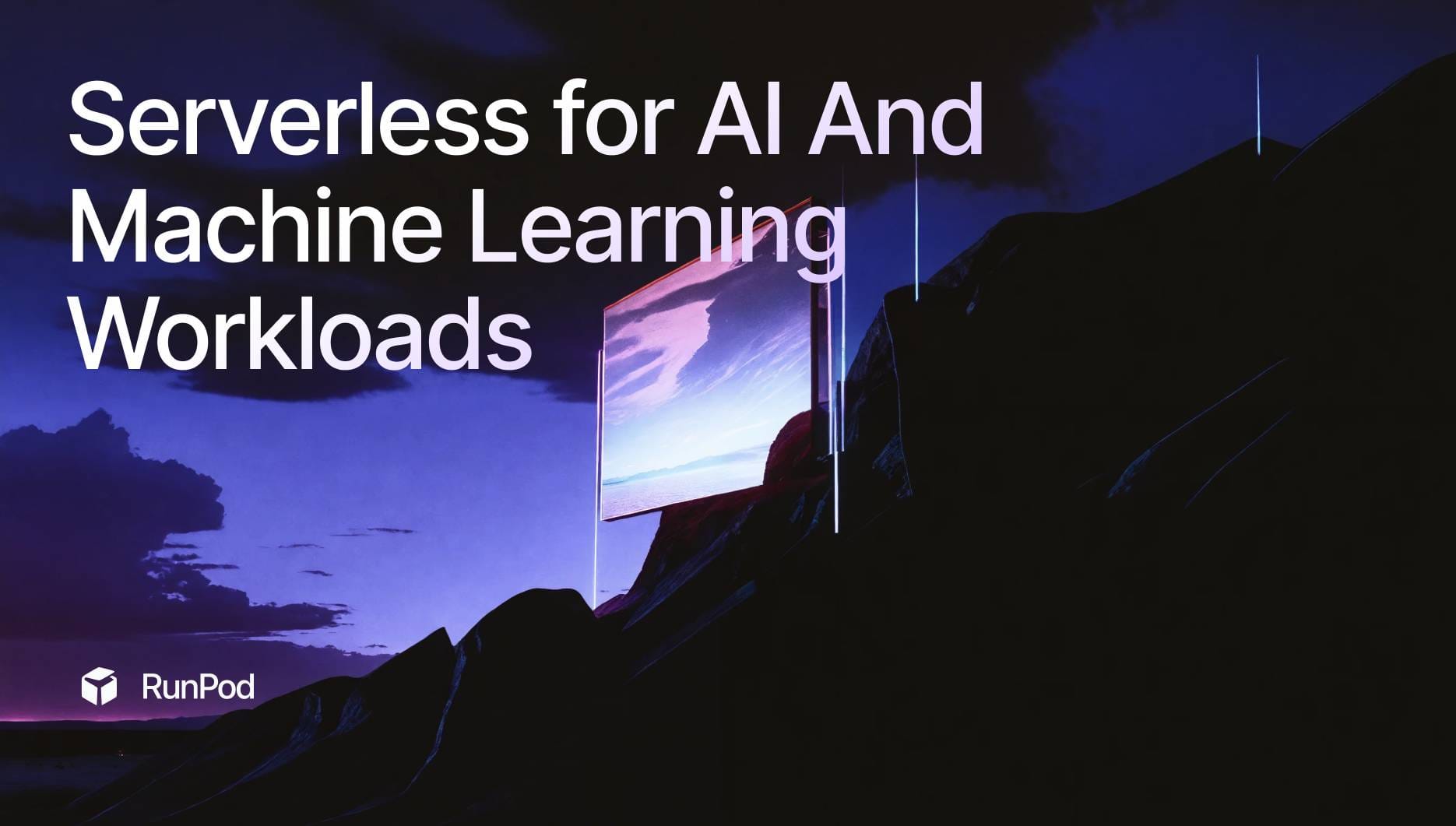Serverless for Artificial Intelligence and Machine Learning Workloads

The need to upscale, reduce operational overhead, and bring cost efficiency allows serverless computing to revolutionize AI/ML workloads. Scaling often results in expensive cost management and hardware maintenance that becomes unbearable with traditional infrastructure. RunPod dynamically allocates resources in these instances to work seamlessly with modern AI workflows. This article demonstrates how to practically apply a serverless solution for training, deploying, and managing machine learning models.
Training and Deploying ML Models in a Serverless Environment
Training Models in a Serverless Environment
The training of machine learning models involves intensive computational resource requirements, which often cannot be facilitated through fixed infrastructure. In this regard, serverless platforms dynamically provision the required number of GPUs and TPUs.
For instance, the RunPod can start GPU-backed containers to train the model in minimal configuration. Here's a step-by-step on how to get started:
- Set up your account in RunPod: sign up and create a new serverless endpoint with GPU acceleration.
- Choose the container environment: select an already prepared image with TensorFlow or PyTorch installed.
- Deploy your training script: push your code to a GitHub repo and then bring that repo in with our GitHub integration.
Here's an example of some code you might deploy in your repo:
# File: train_model.py
import torch
import torch.nn as nn
import torch.optim as optim
from torchvision import datasets, transforms
# Define a simple model
class SimpleNN(nn.Module):
def __init__(self):
super(SimpleNN, self).__init__()
self.fc1 = nn.Linear(28 * 28, 128)
self.fc2 = nn.Linear(128, 10)
def forward(self, x):
x = x.view(-1, 28 * 28)
x = torch.relu(self.fc1(x))
return self.fc2(x)
# Training configuration
device = torch.device('cuda' if torch.cuda.is_available() else 'cpu')
model = SimpleNN().to(device)
optimizer = optim.Adam(model.parameters(), lr=0.001)
criterion = nn.CrossEntropyLoss()
# Dataset and DataLoader
train_loader = torch.utils.data.DataLoader(
datasets.MNIST('./data', train=True, download=True, transform=transforms.ToTensor()),
batch_size=64,
shuffle=True
)
# Training loop
for epoch in range(10):
for batch_idx, (data, target) in enumerate(train_loader):
data, target = data.to(device), target.to(device)
optimizer.zero_grad()
output = model(data)
loss = criterion(output, target)
loss.backward()
optimizer.step()
if batch_idx % 100 == 0:
print(f"Epoch {epoch}, Batch {batch_idx}, Loss {loss.item()}")
# Save the model
torch.save(model.state_dict(), "simple_nn.pth")This script can be run on a serverless container with GPU support. Dynamic allocation of GPUs means you pay only for what you use during training.
Deploying ML Models on Serverless Platforms
For example, deploying inference models on serverless platforms ensures scalability and low latency. RunPod automatically scales containers to increase high traffic while keeping response times as low as possible.
# File: deploy_model.py
from fastapi import FastAPI
import torch
from model import SimpleNN
# Load the trained model
model = SimpleNN()
model.load_state_dict(torch.load("simple_nn.pth"))
model.eval()
app = FastAPI()
@app.post("/predict")
async def predict(data: list):
# Preprocess input data
tensor_data = torch.tensor(data).float()
with torch.no_grad():
predictions = model(tensor_data)
return {"predictions": predictions.argmax(dim=1).tolist()}This application can be deployed to a serverless endpoint that automatically scales with usage. You can expose this through an API gateway for seamless integrations.
This is becoming extremely important now that generating video in real-time with packages like LTXVideo is a thing - while serverless-based image gen through Stable Diffusion has been a thing for quite some time, with video becoming viable for serverless generation a new frontier for workload possibilities for serverless has opened up. So far, video fine-tuning has been LoRA based which means that you can accept training workloads on a provided dataset, accept your variables such as learning, rank, epochs, etc. and provide the trained file back, along with the ability to provide weights and resume training on request. Because these variables are all very, well, variable, this means that serverless is primed to handle these kinds of workloads.
Best Practices for Serverless AI Pipelines
Optimizing Start Times
Preparing your container is essential - the more it has to pull to accomplish its workload, the slower each worker's startup will be. Flashboot can help mitigate this, but it won't trigger every single time without fail and preparation when you create your repo or image will save time every time a worker boots.
Cost Management in Serverless AI Workloads
Perform training and inference tasks during off-peak hours to take advantage of lower resource costs. Monitor your expenses using resource tags, and use usage metrics to dynamically adjust resource allocation.
Scalability and Reliability
Set up autoscaling policies that can handle sudden increases in traffic. For instance, set minimum and maximum container counts to make sure your services are available during high demand while keeping costs low during idle periods.
Runpod's Capabilities for Serverless AI/ML
Serverless Infrastructure of RunPod
RunPod provides a flexible serverless infrastructure that simplifies the management of AI/ML workloads. Developers can scale workloads without the complexity of provisioning and maintaining hardware with features such as on-demand GPU acceleration.
Key Features of RunPod for AI/ML
RunPod supports many popular ML frameworks like TensorFlow, PyTorch, and JAX - anything that you can run on CUDA, you can run in serverless. Provide your own container environments for anything, and use RunPod's automagic scaling to efficiently handle unpredictable demand.
Conclusion
Serverless computing transforms the way developers operate in AI/ML workloads by making infrastructure management easier and scaling much more cost-effective. RunPod enables teams to focus on developing models without hardware limitations. By embracing serverless strategies, you open the gateway to new ways of realizing efficient and scalable AI solutions tailored to modern demands.